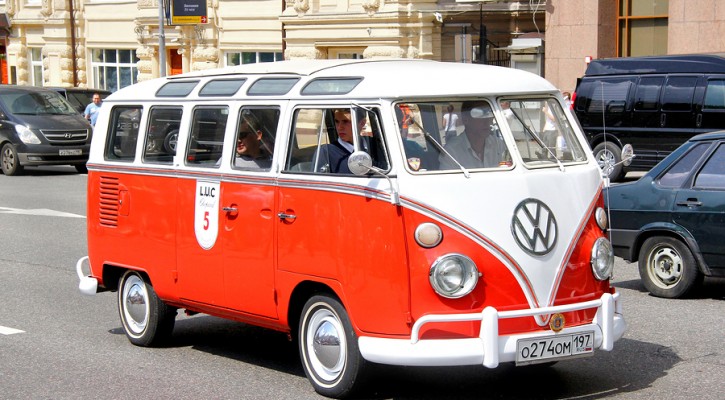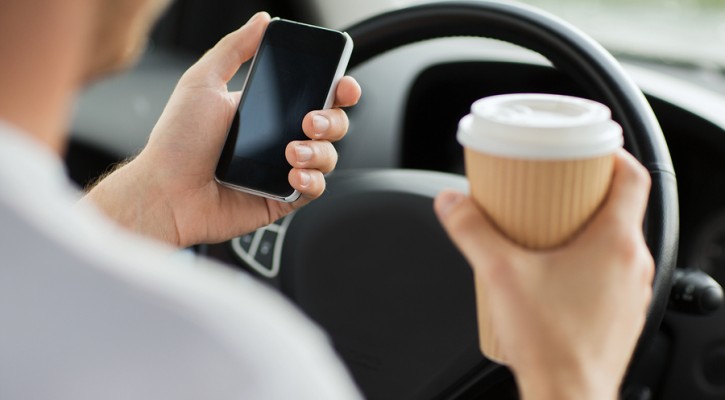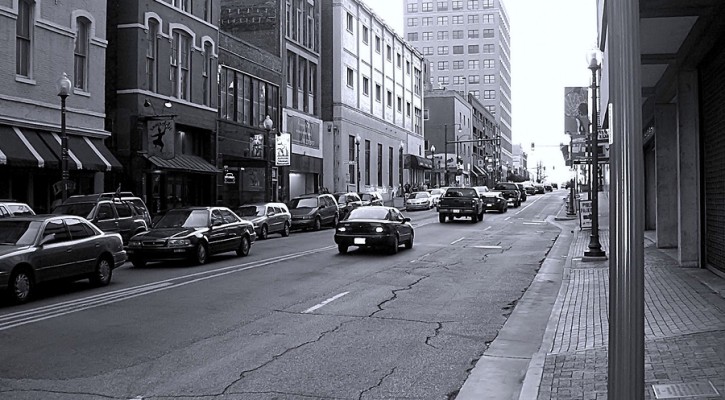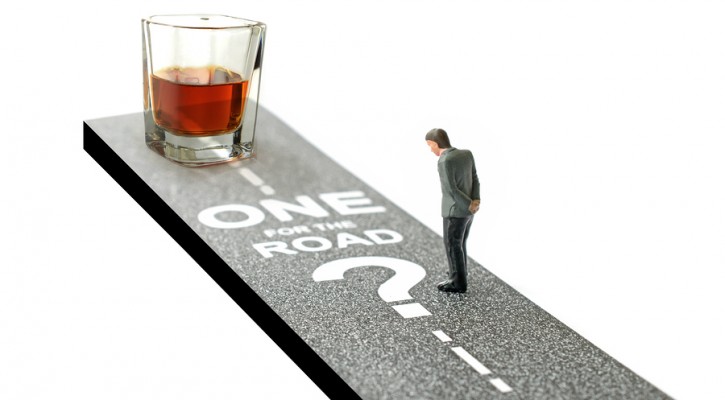
Bringing Back the Van
September 29, 2014
Somewhere along the way, the van lost its cool. Its rich history of transportation, military combat, freak festivals, and chariots of the working man became replaced by the cultural equivalent of mom jeans.
Sure, the van still makes a great family vehicle. It’s perfect for transporting kids to soccer practice. However, it’s so much more than that. Vans can do just about everything that trucks can, plus they make extremely comfortable road trip accommodations.
So, if you’re stuck driving the family van, don’t be embarrassed. That ride is so much cooler than you’d think. That’s what this animated history of the van is all about. Check it out.

How Will You Teach Your Teens?
September 5, 2014
Our world is full of hi-tech advances to help keep teen drivers safe. However, how far is too far when it comes to keeping your teens in check?
Over at WIRED, GeekDad and GeekMom have decided to go low-tech in teaching their GeekTeen driver how to become a responsible adult. The results are not yet in, but we’d be willing to bet that these parents are on to something:

Parents Justify Texting While Driving and DUI
August 26, 2014
We understand that being a parent is hard work. Parents can be forgiven for occasional mistakes – such as that time they dropped you on your head as an infant. However, a recent survey conducted by Liberty Mutual reveals that parents are teaching their teens some terrible driving habits, such as texting while driving and driving under the influence.
Here are the surprising results:
- 88% of teens said their parents used a mobile device while at the wheel
- 58% said their parents texted while driving
- 42% said they have asked parents to stop text-messaging while operating a vehicle
- 18% said they have tried to get them to stop driving while high on weed
- 16% said the adults drove with kids in the car after having at least one alcoholic beverage
- 40% of teens who asked their parents to stop risky driving behaviors said their parents either ignore them or justify their actions!
Teens get the #DriveSafe message. They are constantly told not to drink and drive, text and drive, talk and drive, drive distracted, or drive while high. They are barraged with a million messages at school, at driver’s ed, on social media and at home. They are targeted by PR campaigns that create TV commercials, radio commercials, online ads, billboards, publicity stunts and teen-oriented events. However, when they see their own parents ignoring these messages or justifying their own risky behaviors, what are teen drivers expected to think?
Parents are the greatest influence on their children’s driving habits. Whether they know it or not, kids pick up their driving behaviors from mom and dad at a very young age. They notice when they drive with one hand, turn without blinkers, tailgate, speed and run through stop signs. Teenagers whose parents drive recklessly are more likely to be bad drivers themselves. That’s why it’s a shame to see that so many parents are driving distracted, and that any parents are driving while under the influence.
To all you teen drivers out there: forgive your parents… but, keep bugging them about driving safely. Offer to drive after they’ve had a beer. Tell them to pull over and let you drive if that phone call or text message is important. Surprise your folks by being the smart and sober one, and let them learn from your good influence.

The Art of Parking
July 21, 2014
You may know how to drive, but do you know how to park? Parking is an essential skill. Without it, we’d be stuck on a perpetual drive, a never-ending commute that would quickly wear down that new-driver excitement. That’s why we’re here to cover all the basics when it comes to The Art of Parking.
There are only a handful of parking styles that most drivers must master. We’ll start with the easiest and work our way up:
The Driveway
Parking in a driveway is pretty straight forward. However, there are a few tips to consider before pulling in:
- Take a nice, wide turn into the driveway to avoid hitting the curb, the mailbox, or anything else on your way in.
- Try to park straight and centered to make backing out easier.
The Basic Parking Space
Parking in a basic parking space is usually a simple task. These spaces can be found in parking garages and parking lots. They are marked in front of corner stores, grocery stores and shopping centers, as well as at the park and at school… basically, they’re everywhere. When parking in a parking space, keep these tips in mind:
- Take a wide turn into the space for straight, centered parking.
- If another car is parked at an angle or is too close to the line, try to avoid parking right beside it. This will cause you to park off-center, causing the next driver to have to park off-center. Plus, if that car leaves before the you, then you will look like the person who doesn’t know how to park right.
- Be sure to pull all the way into the space so that your back end isn’t sticking out.
- Be careful not to pull too far up. You may hit the curb. If you’re really unlucky, you may catch your front bumper on the curb and cause serious damage. If you’re really, really unlucky, you may also damage the curb and have to give the store-owner your insurance information.
- Beware of ONE WAY markings. They can be marked with arrows on the asphalt or on signs.
- Drive slowly and carefully when looking for an open spot. Parking lots and parking garages are full of pedestrians, children, and other drivers. Most of these people are only half-way paying attention to their surroundings. The rest are completely oblivious.
The Street
Most street parking involves the dreaded Parallel Parking technique. This skill may be intimidating at first, but once you master it you will be able to park just about anywhere (without it, you will always have a hard time parking in urban areas).
Begin by practicing with cones or cardboard boxes in a private drive or empty parking lot. Once you have found a safe place to learn, try using this common parking technique: The “S” Method.
- As you pull up to the spot, slow down and turn on your blinker.
- Pull up three feet away from the car you want to park behind. Align your back tires with the other car’s back bumper.
- Put your car in reverse and turn your wheels all the way to the right.
- Slowly back up until you’re at a 45-degree angle. Then stop.
- Turn your wheels all the way to the left.
- Continue to back up very slowly until you are parallel with the curb.
This method takes a lot of practice to make perfect. Once you have it down, you should be able to park anywhere without holding up traffic.
The Hill
Sometimes, you will find yourself having to park on a hill. When this happens, it’s important to remember how to park on an incline safely and correctly:
- ALWAYS use your emergency brake.
- When parking upwards on a hill, turn your front wheels to the left.
- When parking downwards on a hill, turn your front wheels to the right.
By learning how to park quickly and correctly, you will feel more confident driving in new places and have more freedom to travel around crowded downtown streets.

A Solute to the Designated Driver
July 2, 2014
The Designated Driver is an honorable breed. These awesome people make the roads a safer place and the world a better place.
While others are running wild, they remain safe and sober and ready to be someone else’s lifesaver. They save the lives of their friends and family. They save the lives of other drivers, cyclists, and pedestrians. They save the lives of anyone and anything that happens to lie in the war path of a potential drunk driver. They are heroes.
To all you sober drivers out there… we solute you!
And to all you new drivers out there, getting your license for the first time and getting that first taste of “freedom on the open road”… we encourage you to become a designated driver this year and help save lives!
With 4th of July around the corner, and summer festivities raging on until the end of the season, we can use all the designated drivers we can get.
So get on the #DD bandwagon and help keep our roads safe.
Faster is Better?
June 20, 2014
Here at the Test Questions and Answers blog, we like to advocate for safe driving practices. We like to promote a safety-oriented driving style for all our new drivers. We also like to share the lesser-known facts of life on the road, things that you won’t learn from your local driving instructor.
With that in mind, we’d like to share a video with some counter-intuitive ideas (and surprising facts!) about speed limits. Mainly, the idea that sometimes faster is better.
Now, all you eager teenage speedsters shouldn’t get too excited. This video argues that raising speed limits could reduce traffic collisions. It does not advocate for breaking the law and driving over the speed limit. It certainly doesn’t advocate for street racing, or even driving faster than normal highway speeds.
Nevertheless, it’s always cool to learn something that shatters our common assumptions, our basic understanding of accepted realities. Now that you know something most others don’t, show off your new-found knowledge and share the story!
And remember, don’t just drive faster, #drivesafe.

Driver Goof-ups: It happens to the Best of Us
June 19, 2014
We can all be a little absent-minded from time to time. At some point, everyone forgets where they parked, or leaves their coffee on the roof of the car. In fact, a recent survey by insurance.com had some very revealing percentages to share:
- 52% of drivers surveyed have forgotten where they parked
- 43% drove over a curb in a parking lot
- 37% locked keys in the car
- 31% drove away with something on the roof
- 29% tried to open a car door and realized it wasn’t their car
- 27% couldn’t back out of a parking spot because other cars or objects were too close
- 26% dropped money or food at a drive-thru window
- 22% accidentally started the car alarm and couldn’t turn it off quickly
- 13% couldn’t get out of a round-about and kept driving in circles
- 11% drove away from a gas pump with the nozzle still in the tank
- 8% forgot a passenger and had to go back
- 8% got in a car and realized it wasn’t their car
Humans are not perfect creatures, so if you’re guilty of one of these common driver goof-ups, then don’t feel bad. It happens to the best of us.

Road Trip: Is Your Teen Ready?
June 13, 2014
When are teens ready to experience the euphoria of life on the open road? When are the capable of handling the complexities of long distance driving and road trip planning? As a parent, you may feel the urge to say “never”, or at least not until they are in college. However, teens may already be feeling an uncontrollable urge to hit the road with their friends and spend a few days away from their parents, their home town and their all-too-familiar home life. If you are a parent grappling with this perplexing problem, then this post is for you:
http://www.roadtripamerica.com/travelplanning/Teenage-Road-Trip.htm

Anticipation: An Essential Survival Skill
June 10, 2014
As many new drivers will come to learn, there are a lot of idiots on the road. People drive carelessly, aggressively, emotionally, and are often distracted by phones, passengers, or just life in general. When it comes to avoiding these risky drivers, anticipation is key.
The first rule of anticipation? Give yourself plenty of time and space to watch, see and react. The farther your following distance, the bigger the picture. If you are tailgating the vehicle in front of you, all you can see is their bumper. However, if you hang back a few more car lengths you will be able to see the road ahead and the traffic ahead. You will be able to estimate the speed of traffic overall, as well as be able to spot any drivers traveling drastically slow or dangerously fast and manoeuvre around them. Plus, the bigger the cushion the more time you have to react to quick stops and emergency situations.
The second rule of anticipation: see everything. Don’t just focus on the car in front of you. Know what is going on a mile down the road, check your mirrors and blind spots, and keep a visual of the traffic all around you. Take note of any risky drivers, like maybe a car coming up from behind that is weaving in and out of traffic or a large truck riding your bumper. Besides weavers and tailgaters, also keep an eye out for drivers who are swerving (either due to distraction, fatigue or intoxication). These are all vehicles you will want to avoid and/or pass with extreme caution.
Finally, know that most drivers don’t follow the law all the time. They will turn without warning, change lanes without blinkers, cut people off in traffic, ignore yield signs, forget right-of-way rules, and sometimes even run right through stop signs and red lights. To anticipate this behavior it is important to follow the first two rules mentioned here, and then make judgments based on the other driver’s actions, speed and behavior.
Anticipation is an art. Mastering it will allow you to navigate the nation’s roads without incident and live a nice, safe life as a responsible driver.
